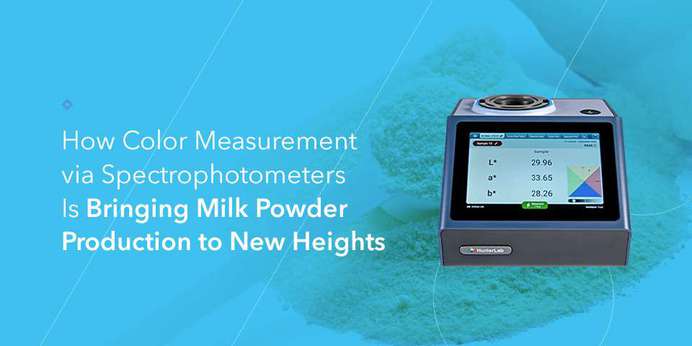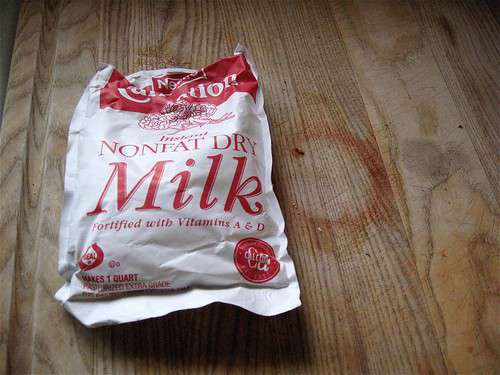Refining Manufacturing Practices
South America is home to several of the largest producers of dehydrated milk products and both people and economies depend on the powdered beverage for sustenance. In order to optimize production and fortify the market, a group of Argentinian researchers set out to determine the impact of heat treatments and manufacturing season on color change.
Using a reflectance spectrophotometer to obtain CIE Lab scale values, the team analyzed color data from milk powder after both direct and indirect heat treatment and found distinct color shifts created by the methods.
The results indicated that indirect heat treatment, which requires greater, more sustained heat application, produced more pronounced browning as the result of “the combined action of temperature and time.” Meanwhile, direct heat application had a less severe effect on color.
However, the exact nature of the color shifts was also dependent on the quality of the raw material. The milk powder produced in the summer had lower L* values along with higher a* and b* values. This may be due to the fluctuating chemical composition of the raw milk as determined by seasonal animal diet. In particular, variation in carotene levels appears to determine the level of browning reaction each sample displayed when exposed to both direct and indirect heat processing.
These observations could have important implications for milk powder manufacturing practices and product success. As dairy processing research continues to harness the power of spectrophotometry to analyze color change in response to processing variables, farmers and manufacturers alike can tailor their production to satisfy the demands of consumers as well as develop more exact methods to improve product stability and maximize shelf life.
Doing so may be particularly critical in countries like Argentina, where powdered milk is the primary dairy export and acts as a major economic engine. Moreover, enhanced quality assurance is critical to meeting the needs of populations who rely on milk powder to safely deliver essential nutrients.
Improve Color Consistency and Quality With the ColorFlex L2 Spectrophotometer From HunterLab
The ColorFlex L2 is the perfect color spectrophotometer for collecting chromatic data on powdered milk. The HunterLab experts designed this full-featured option to eliminate loose powder measurement challenges and support early identification of where color alterations may be arising so you can adjust processes sooner.
Our ColorFlex L2 is ready for integration into your processes right out of the box, offering onboard guidance to simplify setup and reduce operator training time to just minutes. You can have confidence in the accuracy of your readouts since our precision camera aids users in correct sample positioning.
Document and analyze data without time-consuming information transfer or external PCs. We've developed this spectrophotometer for ultimate efficiency. Built-in connectivity allows you to transfer spectral and color results directly to Laboratory Information Management Systems (LIMS) and Statistical Process Controls (SPCs), aiding in analysis and collaboration among facilities.
We've also included our most advanced and easy-to-use software, Essentials 2.0, for the most accurate color analysis. Because the ColorFlex L2 was designed as an independent color workstation, everything you need is onboard — no additional computer is required.
As with all HunterLab spectrophotometers, ColorFlex L2 is engineered for exceptional value. This device is ready to withstand your manufacturing and production environments with a touchscreen interface and durable industrial glass. A sealed, spill-proof case, compact footprint, and our hallmark customer support further increase return on investment.
The HunterLab Difference
HunterLab color spectrophotometers have played an integral role in ensuring the quality and safety of food products for over 70 years. Our commitment to excellence ensures that you are able to obtain the most accurate color data possible throughout both research and manufacturing processes, allowing you to produce the best products possible with ease and confidence.
Contact us to learn more about our innovative range of spectrophotometers, sophisticated software, and world-class customer service.




